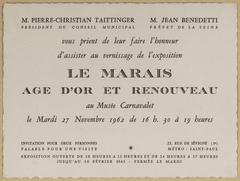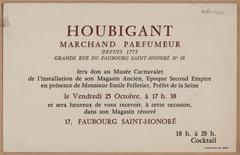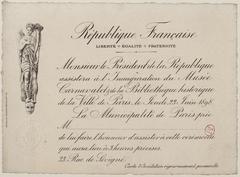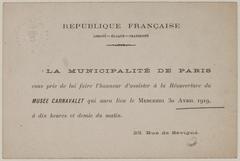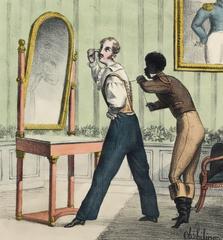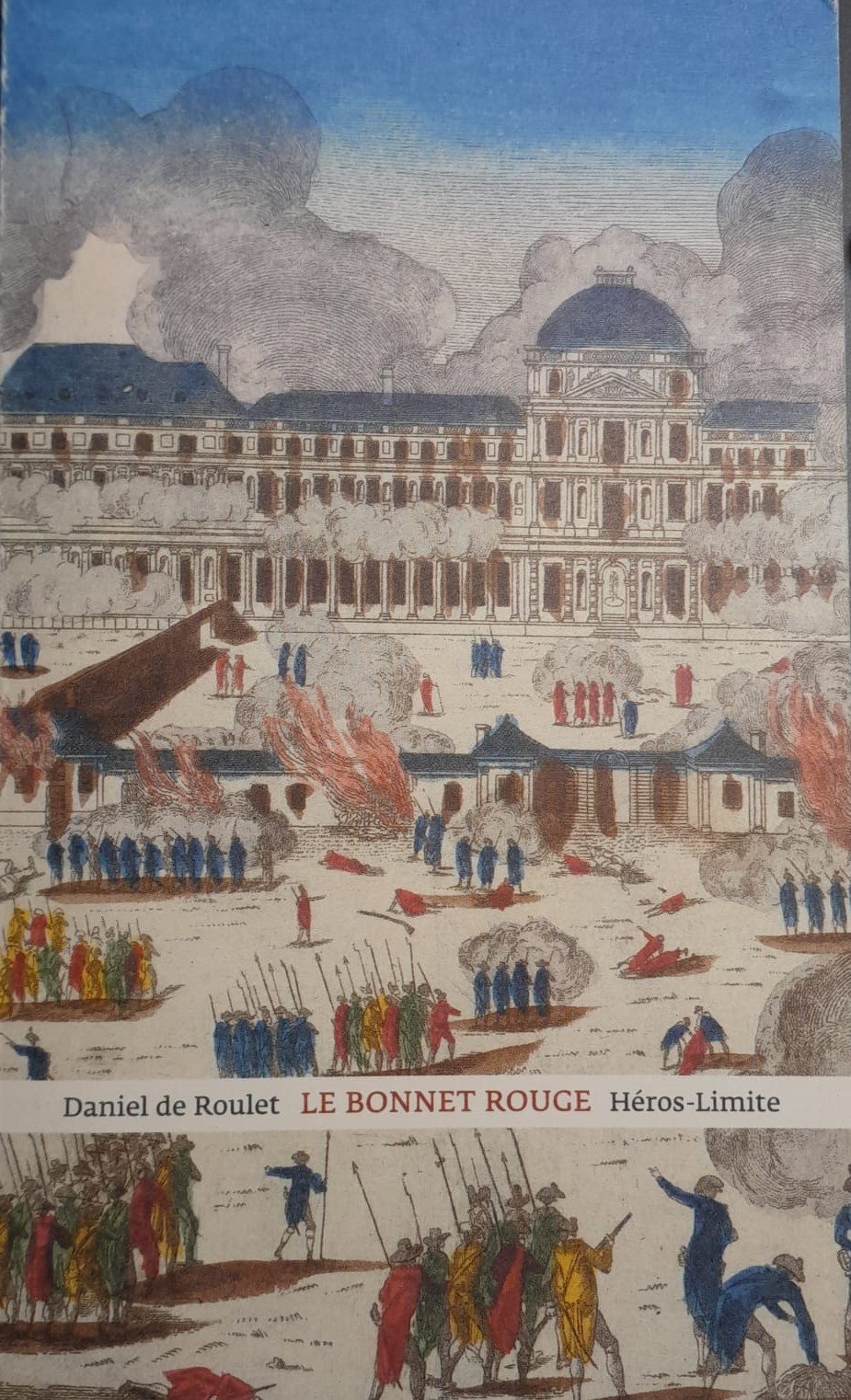
Musée Carnavalet Visiting Hours, Tickets, and Paris Historical Sites Guide
Date: 14/06/2025
Introduction to Musée Carnavalet
Nestled in the heart of the Marais, one of Paris’s most storied neighborhoods, the Musée Carnavalet stands as the city’s oldest museum dedicated to chronicling the evolution of Paris itself. Housed in two adjoining mansions—the Hôtel Carnavalet (Renaissance) and the Hôtel Le Peletier de Saint-Fargeau (Baroque)—the museum is not only an architectural gem but also a treasure trove of objects, artworks, and period rooms that narrate over 450 years of history, from ancient Lutetia to the vibrant capital of today.
Whether you’re a history buff, architecture admirer, or first-time visitor, this comprehensive guide provides up-to-date details on Musée Carnavalet visiting hours, ticketing, accessibility, transportation, and tips for making your visit memorable. For the latest updates, refer to the Carnavalet Museum Official, as well as trusted resources like Paris Insiders Guide and Paris Tourist Information.
Table of Contents
- Introduction to Musée Carnavalet
- Historical Overview and Development
- Architectural Heritage and Museum Layout
- What to See: Highlights and Special Exhibitions
- Practical Visitor Information
- Accessibility and Family Visits
- Frequently Asked Questions (FAQ)
- Conclusion and Visiting Tips
- References
Historical Overview and Development
Origins
The idea for Musée Carnavalet emerged during the Second Empire (1852–1870), amid Baron Haussmann’s sweeping modernization of Paris. Recognizing the risk of losing historic neighborhoods and landmarks, the city acquired the Hôtel Carnavalet in 1866 to preserve and showcase Paris’s evolving identity (Carnavalet Museum Official). The museum opened in 1880, offering Parisians a dedicated space to explore and safeguard their heritage.
Expansion and Renovation
A key milestone came in 1989 with the annexation of the neighboring Hôtel Le Peletier de Saint-Fargeau, which nearly doubled exhibition space (Carnavalet Museum Official). A transformative renovation from 2016–2021 modernized the museum, introducing a logical 1.5-kilometer visitor pathway, new basement galleries for archaeological finds, improved accessibility, bilingual signage, and expanded public amenities (Snøhetta Project; ArchDaily).
Architectural Heritage and Museum Layout
The Buildings
- Hôtel Carnavalet: Built between 1548 and 1560, this Renaissance hôtel particulier features a façade by Pierre Lescot and bas-reliefs by Jean Goujon. A 17th-century renovation by François Mansart introduced classical elements (The Geographical Cure; Chatillon Architectes).
- Hôtel Le Peletier de Saint-Fargeau: Added in 1989, this Baroque mansion (built 1688 by Pierre Bullet) is distinguished by its ornate interiors and grand staircase (ArchDaily).
Courtyards and Gardens
The museum’s courtyards, restored to their Renaissance splendor, offer tranquil spaces dotted with classic sculptures. The Jardin d’Olympe and the Inner Garden provide a peaceful respite and host a seasonal café (The Geographical Cure; Paris Insiders Guide).
Architectural Fragments and Period Rooms
As Haussmann’s works dismantled much of old Paris, interiors, façades, and shopfronts were salvaged for the museum. Notable highlights include:
- Historic Shop Signs: A whimsical collection reflecting centuries of Parisian commerce (Paris Insiders Guide).
- Reconstructed Salons: Meticulously restored interiors, such as Madame de Sévigné’s 18th-century salon, immerse visitors in Parisian daily life (The Geographical Cure).
What to See: Highlights and Special Exhibitions
Permanent Collections
With over 600,000 objects, the Musée Carnavalet offers an unparalleled panorama of Parisian history (Paris Top Ten; Carnavalet official):
- Archaeological Finds: From Neolithic dugout canoes to Gallo-Roman mosaics.
- Revolutionary Artifacts: Model of the Bastille, guillotine earrings, and pamphlets from 1789.
- Belle Époque and Art Nouveau: Fouquet’s jewelry shop by Alphonse Mucha, Hector Guimard’s Métro entrances.
- Period Rooms: Walk through re-created bourgeois salons from the 17th–19th centuries, including Marcel Proust’s bedroom.
- 20th Century and Beyond: Resistance memorabilia, May 1968 posters, and objects reflecting Paris’s multicultural present (Offbeat France).
Temporary Exhibitions
The museum is acclaimed for ambitious, rotating exhibitions:
- “Paris 1793–1794: A Revolutionary Year” (Oct. 16, 2024 – Feb. 16, 2025): Over 250 works exploring the upheavals of the French Revolution (Come to Paris).
- “Le Paris d’Agnès Varda, de-ci, de-là” (Apr. 9 – Aug. 24, 2025): Celebrating the filmmaker’s unique relationship with Paris (Culturezvous).
Digital and Educational Resources
A large portion of the collection is available online, and the museum offers robust programming:
- Guided tours and family workshops (e.g., Parisian fashion through the ages)
- Multilingual signage (French, English, Braille, and Spanish summaries)
- Child-friendly panels and interactive exhibits (Secrets of Paris; Carnavalet Activities)
Practical Visitor Information
Location
Address: 23 rue de Sévigné, 75003 Paris, France
District: Marais, 3rd arrondissement
Getting There:
- Metro: Saint-Paul (Line 1), Chemin Vert (Line 8), Pont-Marie (Line 7), or Bréguet-Sabin (Line 5)
- Bus: Lines 29, 69, 76, 96
- Vélib’: Bike-sharing stations nearby (My Paris Pass)
Visiting Hours
- Open: Tuesday–Sunday, 10:00 AM–6:00 PM (last admission 5:15 PM; rooms close at 5:45 PM)
- Closed: Mondays, January 1, May 1, and December 25 (Carnavalet Official)
Tickets and Admission
- Permanent Collections: Free admission, no reservation required.
- Temporary Exhibitions: Ticket required (typically €13 full price, €11 reduced); advance booking recommended for peak times (Carnavalet Official)
- Guided Tours: Available for a fee (from €5); audio guides offered in multiple languages (Travel Worldclass)
Amenities
- Café Carnavalet: Relax in the Inner Garden with coffee, pastries, and light meals. Special pop-up events occur seasonally.
- Gift Shop: Books, exhibition catalogs, and Paris-themed souvenirs.
- Restrooms: Located throughout the museum.
- Cloakroom: Only small bags allowed due to security; no storage for large luggage.
- Photography: Allowed in permanent galleries for personal use (no flash or tripods); restrictions may apply in temporary exhibitions (Expo Paris)
Accessibility and Family Visits
The Musée Carnavalet is committed to accessibility and inclusivity:
- Wheelchair Access: Elevators, ramps, and accessible toilets; wheelchairs available for loan.
- Visual and Hearing Impairments: Braille transcripts, tactile drawings, audio descriptions, and hands-on exhibits (Carnavalet Official)
- Free Admission: For disabled visitors and carers, job seekers, and certain social groups (with proof).
- Family-Friendly: Interactive exhibits, family workshops, and child-level signage.
Frequently Asked Questions (FAQ)
Q: What are the Musée Carnavalet visiting hours?
A: Tuesday–Sunday, 10:00 AM–6:00 PM; closed Mondays and certain holidays.
Q: Is admission free?
A: Permanent collections are free. Temporary exhibitions require a ticket.
Q: How do I get there?
A: Metro (Saint-Paul, Chemin Vert), several bus lines, and nearby Vélib’ stations.
Q: Is the museum accessible for wheelchair users?
A: Yes, with elevators, ramps, and accessible restrooms.
Q: Can I take pictures?
A: Yes, in permanent collections (no flash/tripods). Temporary exhibitions may have different policies.
Q: Are guided tours available?
A: Yes, for a fee; check the official website for schedules and booking.
Q: How long should I plan for a visit?
A: Most visitors spend 2–4 hours; history enthusiasts may stay longer.
Conclusion and Visiting Tips
The Musée Carnavalet is a must-visit for anyone seeking to immerse themselves in the layered history of Paris. Its free admission, vast and multidisciplinary collections, beautifully restored period rooms, and tranquil gardens make it a unique window into the evolution of the City of Light.
Tips for an Enjoyable Visit:
- For a quieter experience, visit on weekday mornings.
- Wear comfortable shoes—the museum is expansive.
- Plan breaks in the gardens or café.
- Check ahead for special exhibitions that may require tickets.
- Explore the museum’s digital collections and download the Audiala app for audio guides.
For the most current information, events, and ticketing, always refer to the official Musée Carnavalet website.
References and Further Reading
- Carnavalet Museum Official
- Paris Tourist Information
- Offbeat France
- My Paris Pass
- Snøhetta Project
- ArchDaily
- Come to Paris
- Carnavalet Official Website
- Paris Insiders Guide
- The Geographical Cure
- Chatillon Architectes
- Paris Top Ten
- Secrets of Paris
- Culturezvous
- Expo Paris
- Travel Worldclass
Recommended visuals:
- Hôtel Carnavalet façade (alt: “Musée Carnavalet Renaissance architecture in Paris historical sites”)
- Immersive period rooms (alt: “Immersive period rooms at Musée Carnavalet showcasing Paris history”)
- Museum gardens (alt: “Beautiful gardens of Musée Carnavalet in the Marais district”)
Internal links suggestions:
- “Top 10 Historical Sites to Visit in Paris”
- “Guide to Paris Museums”


